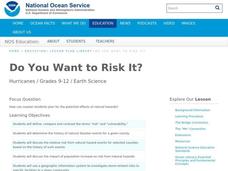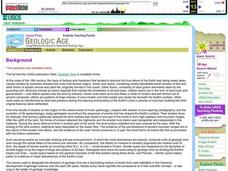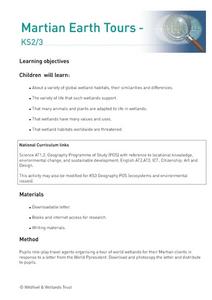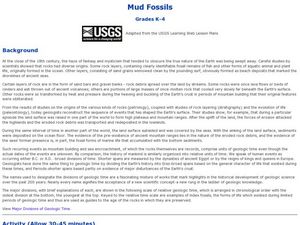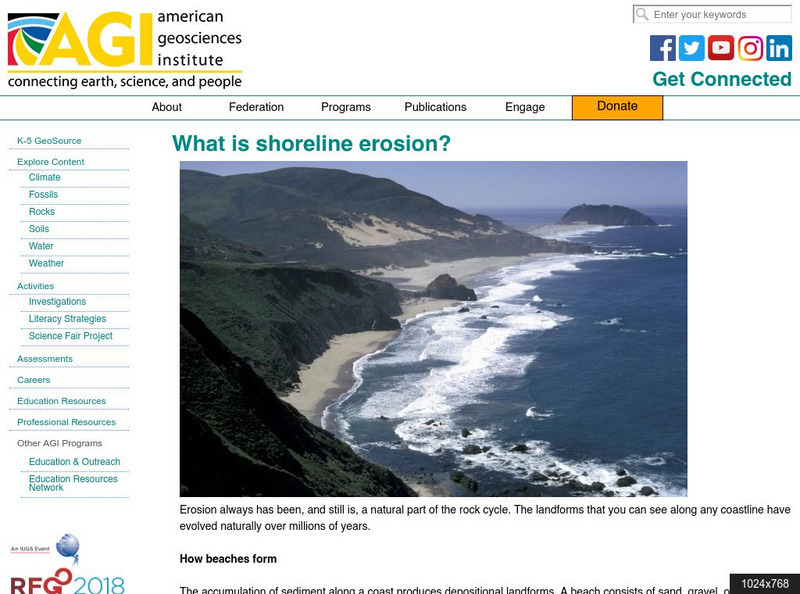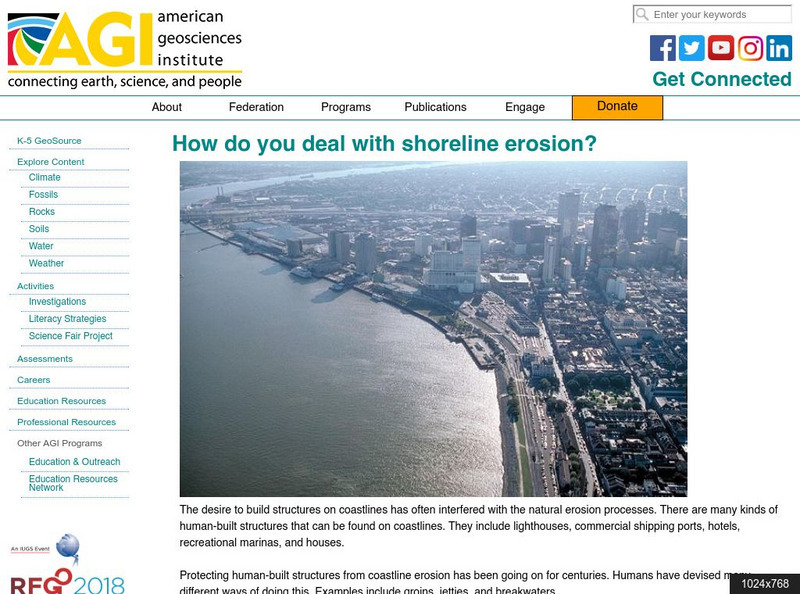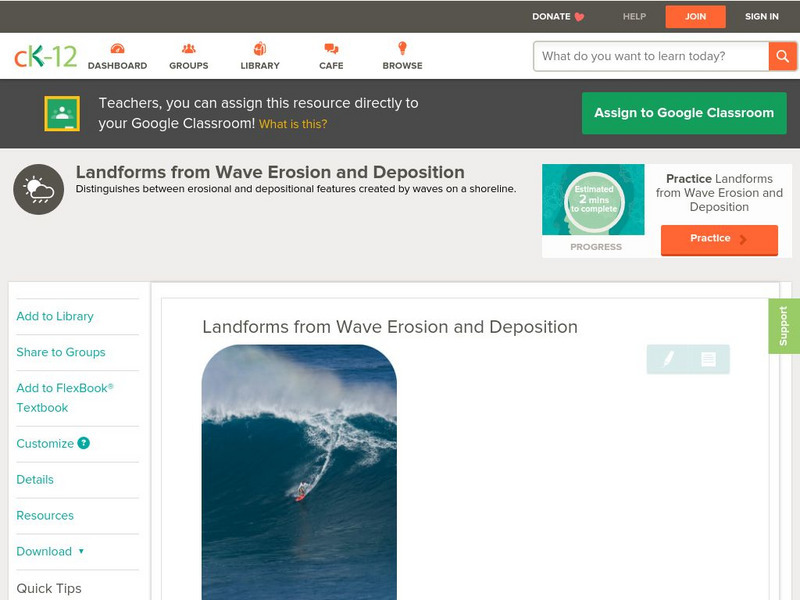NOAA
Make an Edible Coral Reef
Coral reefs are full of an abundance of life and color. Why not celebrate it with an edible coral reef? Learners and teachers alike use cake, icing, and candies to create a tasty version of a coral reef that's complete with colors,...
Curated OER
Do You Want to Risk it?
Students investigate the history of natural disaster events for a given county, discuss the impact of population and the risk from natural disaster events. In this hurricane lesson students use a geographic information system to...
Curated OER
Science Review for Grade 5 (5.2)
In this science review for grade 5 (5.2) worksheet, 5th graders answer 25 earth science questions in a standardized test format, including reading maps and diagrams.
Curated OER
Tide Pool Discovery
First graders visit the Discovery Pool, where they use their senses to investigate the different tide pool species. They touch different species. Students describe how each one feels, and what they look like in words. They draw the...
Curated OER
Geologic Age
Students investigate radioactivity as a tool for measuring geologic time and how geologists use this information to determine the absolute age of rocks or minerals.
Curated OER
Coasts
Students explain the different types of marine coasts and where they are located in the United States and its territories. They explain and identify some of the life forms that inhabit different marine coastal regions.
Curated OER
Martian Earth Tours
Students study a variety of global wetland habitats, their similarities and differences. They examine the variety of life that such wetlands support and determine that many animals and plants are adapted to life in wetlands, that...
Curated OER
Who Has the Data? Monitoring Coral Reefs
Learners access data to characterize coral reefs. For this scientific research lesson, students access data and explain the need for such data when monitoring coral reefs. They will identify and explain three major threats to coral reefs.
Curated OER
Architects of the Coral Reef
Learners discuss reproduction in Cnidaria. in this coral reef lesson, students describe five characteristics of Cnidaria and compare and contrast the four classes. They describe the reproduction strategies they use.
Curated OER
Design a Reef!
Middle schoolers explore coral reef ecosystems. In this ecosystems science lesson plan, students research coral reef ecosystems to determine the major functions the participating organisms must perform. Middle schoolers construct a...
Curated OER
Keeping Watch on Coral Reefs
Young scholars investigate the dangers Coral Reefs face by investigating satellite images. In this environmental protection activity, students utilize the Internet to discover the types of satellites and sensors used to provide...
Curated OER
Mud Fossils
Students observe real fossils. For this science lesson, students make their own mud fossils by pressing material into the mud and letting it dry in the sun for 3-4 days. Students then get the fossils out displaying their mud fossils.
Curated OER
Oceans: A Sensory Haiku
Students create an ocean haiku. In this haiku lesson, students use their five senses to write a haiku. Students watch videos about the ocean, make a sensory portrait, and create a class haiku.
Curated OER
Coral Reef Lesson Plan Caution: Do Not Bleach!
Students explain five ways that coral reefs benefit humans and identify three threats to the reefs. They investigate the phenomenon of "coral bleaching" while examining ways to reduce threats to coral reefs.
Curated OER
Mangrove Ecology and Adaptations
Learners create a plant or animal that would be well adapted to a habitat they selected. They first learn about Mangroves and their specific adaptations that help them survive in their habitat.
Curated OER
Mangrove Ecology & Adaptations
Students creat a plant, animal, or other living organism that would be well adapted to a habitat that they previously selected. First they learn about adaptations of Mangroves.
Curated OER
Now Take a Deep Breath
Students research to answer questions related to deep sea diving. In this deep sea diving lesson, students answer questions on a worksheet using the Internet. They discuss pressure, gas laws, and the physiology of diving in the deep sea.
Curated OER
Keeping Watch on Coral Reefs
High schoolers view a tutorial on coral reefs then investigate corals under stress. In this Earth Science lesson students prepare a written report and explain the relationship between coral reefs and their zooxanthellae.
Curated OER
Images of Katrina
Students use maps and online data to find specific geographic areas. In hurricane Katrina lesson students use aerial photographic imagery to see some impacts of hurricane Katrina.
Curated OER
A Reef of Your Own
Students study the reproductive strategies of reef building corals. In this coral reef lesson students describe the behaviors of reef building corals and their nutritional strategies.
Curated OER
Do Not Bleach!
High schoolers explore the importance of protecting the coral reefs. In this Oceanography lesson, student examine how coral reefs benefit humans, identify major threats to the reefs, and discuss actions to reduce these threats.
American Geosciences Institute
American Geosciences Institute: What Is Shoreline Erosion?
Find out how beach and shoreline erosion affect coastlines.
American Geosciences Institute
American Geosciences Institute: How Do You Deal With Shoreline Erosion?
Learn about the strategies cities use to control beach and shoreline erosion.
CK-12 Foundation
Ck 12: Earth Science: Landforms From Wave Erosion and Deposition
[Free Registration/Login may be required to access all resource tools.] Distinguishes between erosional and depositional features created by ocean waves on a shoreline.



